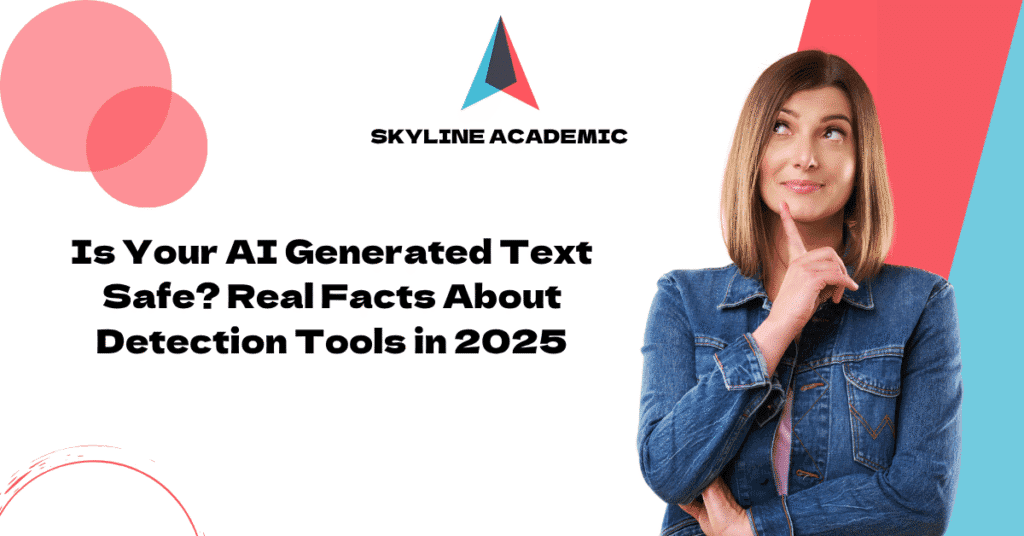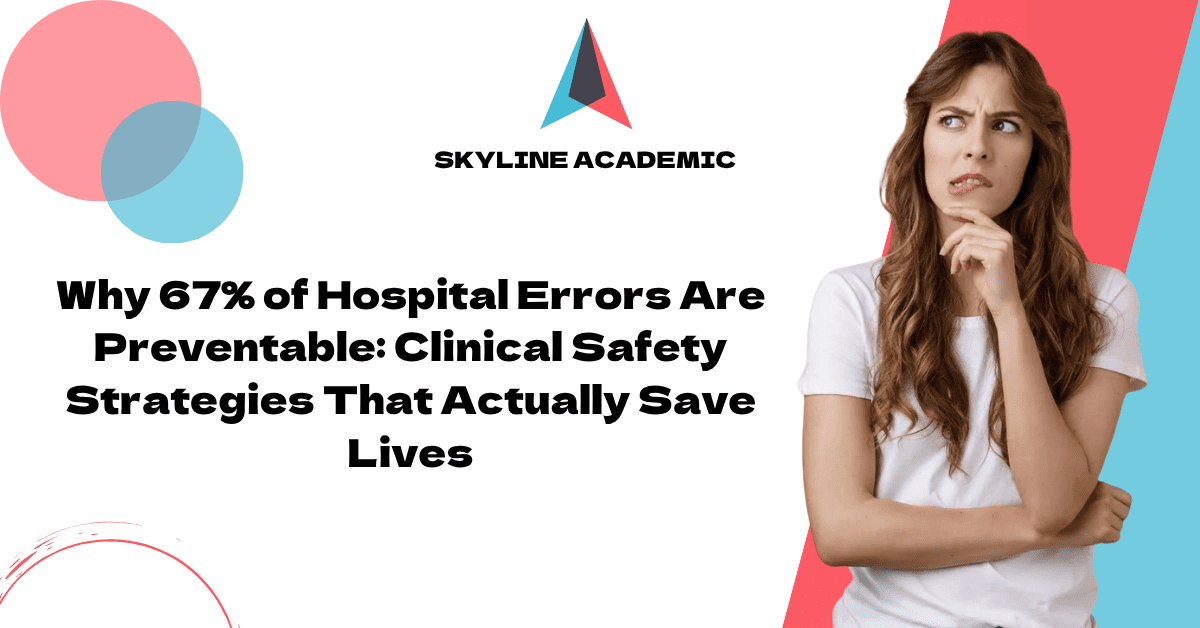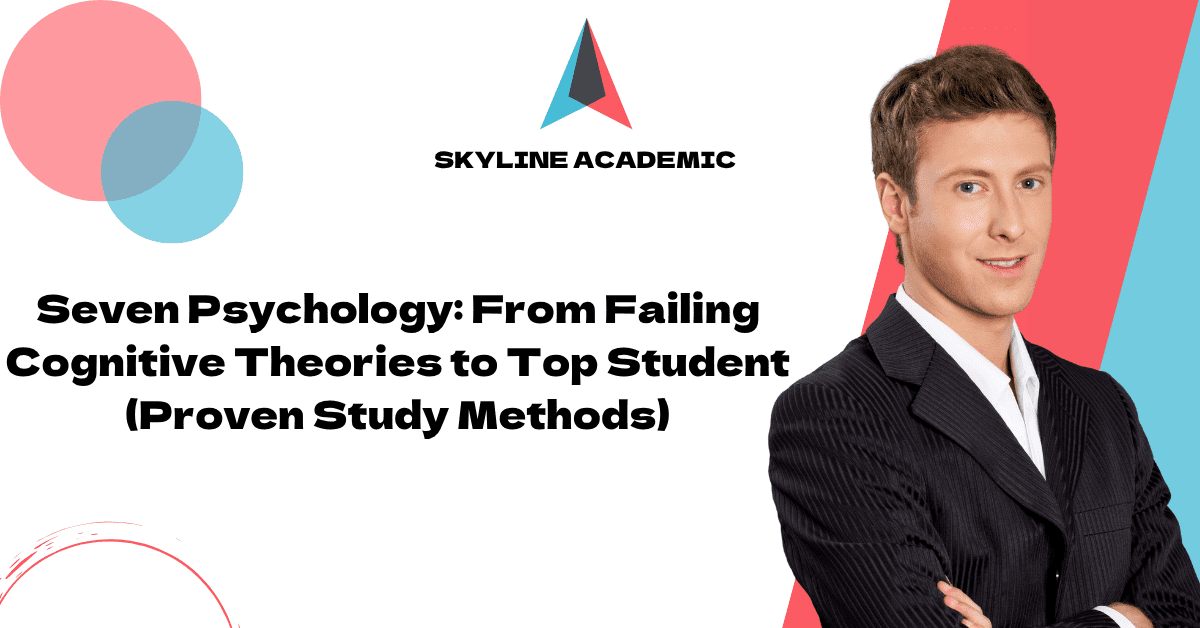Is Your AI Generated Text Safe? Real Facts About Detection Tools in 2025
AI generated text detection tools vary in their accuracy to spot AI-written content. Research shows these tools work better with GPT 3.5 content. They face challenges with GPT 4-generated text and often give mixed results for human writing . This gap shows how hard it becomes to tell AI and human writing apart as AI keeps getting better.
AI writing tools have gained popularity, yet detecting them remains a challenge. Research from Indonesian universities found tools like Quillbot, WordTune, and ChatGPT helped EFL students write better . This improvement makes detection even harder. Regular writing tools that don’t generate content can trigger false alerts in AI detectors . Many questions arise from this situation. Can we trust AI detectors? Should we call it plagiarism when someone uses AI? What’s the best way to make AI text sound more human?
This piece dives into AI detection tools’ reality in 2025. You’ll learn about AI content and plagiarism concerns. We’ll give you practical ways to handle this changing digital world. Students, educators, and content creators need to understand these factors to protect their professional integrity.
How AI-generated content is created and detected
You need to know how AI creates content to spot its fingerprints. Today’s AI tools use advanced natural language processing and machine learning algorithms to create text that reads like human writing [1]. The technology has grown fast. Companies can now generate lots of content quickly, though quality varies in writing style and depth.
What makes AI-generated text different from human writing?
AI-generated and human-written text differ in their language patterns. Human writing shows higher perplexity (unpredictability) and burstiness (sentence variation) than AI content [2]. Human-written articles use about four times more unique words than AI-generated ones [3]. AI writing uses twice as many sentences as human writing but doesn’t vary sentence length as much [3].
People write with a natural flow between short and long sentences. They create dynamic content that shows their personal experiences and emotions. AI-generated text reads more uniformly and predictably [4]. Research shows that models like ChatGPT use present participle clauses two to five times more than humans do. These models also have specific word choices—they use words like “camaraderie” and “mixture of” about 150 times more often than humans [5].
How detection tools analyze text: perplexity, burstiness, and more
Detection tools use machine learning and natural language processing to examine language patterns and sentence structures [6]. These tools measure:
- Perplexity: This shows how surprised an AI model is when it reads text. Lower perplexity points to AI-generated content because it’s more predictable. Higher perplexity suggests human authorship [6].
- Burstiness: This looks at changes in sentence structure, length, and complexity. AI-generated text usually shows lower burstiness with more uniform patterns [6].
These tools also use classifiers and embeddings to sort text based on learned patterns. They represent words as vectors that show meaning relationships [6]. The methods aren’t perfect though. Studies reveal that available detection tools lack consistent accuracy and reliability. They tend to label output as human-written more often [4].
Common AI tools that trigger detection: ChatGPT, Quillbot, Grammarly
Detection systems often catch several AI writing tools. ChatGPT leads the pack as the most accessible generative AI tool. Many people don’t realize that tools like Quillbot (for paraphrasing) and Grammarly (for grammar checking) leave their own detectable patterns [7]. Turnitin’s AI detection feature spots text segments that might be AI-generated. It also flags content changed by AI paraphrasing tools like Quillbot [6].
The detection game gets interesting when AI-generated text goes through another round of AI paraphrasing. Detection accuracy drops from 74% to just 26% [6]. This big change shows the ongoing battle between content creators and detection tools.
Top AI detection tools in 2025: How they really perform
Top AI detection tools today deserve a thorough assessment based on their accuracy rates and real-life uses. Let’s get into how these leading solutions actually work in practice.
1. Turnitin AI Detector
Turnitin now detects AI-generated content in multiple languages, including Japanese and Spanish. The system breaks down the difference between AI-generated text and AI-paraphrased content. Turnitin stays transparent by avoiding scores between 1-19% to reduce false positives. The tool boasts 98% accuracy and catches about 85% of AI-generated content with less than 1% false positives [8]. Users can submit up to 30,000 words, and the system now processes prose text in tables better.
2. GPTZero
GPTZero, a 2022-old dedicated AI detector, boasts a 99% accuracy rate in telling AI and human writing apart [9]. The tool works great with mixed content and maintains 96.5% accuracy for texts that combine AI and human writing. Research shows GPTZero correctly spots human-written text 90% of the time [10]. Content authenticity checks rely on both perplexity and burstiness analysis.
3. Copyleaks
Copyleaks delivers over 99% accuracy in catching AI content in more than 30 languages [11]. The system spots text from ChatGPT, Gemini, and Claude. Its detection combines AI Source Match and AI Phrases technologies. Cornell University researchers named Copyleaks the most accurate detector for LLM-generated text [12]. The tool’s 0.2% false positive rate ranks among the industry’s best.
4. Skyline Academic
Check out Skyline Academic’s complete AI detection tools on their website. Their advanced features help accurately identify AI-generated content with industry-leading precision.
5. Grammarly AI Detection
Grammarly’s plagiarism checker includes this detector that analyzes text patterns typical in AI writing by breaking content into smaller sections [13]. The system trained on hundreds of thousands of samples works hard to avoid false positives. Users get a percentage score that shows how much of their document looks AI-generated, though Grammarly emphasizes this isn’t definitive proof [14].
6. Microsoft Copilot Detection
Microsoft detects AI-generated content throughout their ecosystem where Copilot lives in Word, Excel, PowerPoint, and Outlook [15]. The system runs on OpenAI’s ChatGPT-4 and Microsoft’s Prometheus model to offer both detection and generation features.
The problem with AI detection: False positives, bias, and blind spots
AI detection tools claim high accuracy rates, but they face major challenges that make them unreliable. These tools don’t deal very well with fairness and effectiveness across educational and professional settings.
Why human-written text gets flagged as AI
False positives happen more often than you might expect. These occur when the system wrongly labels human writing as AI-generated. Research shows between 10% and 28% of human-written content gets incorrectly flagged as AI-generated [16]. Turnitin claims a 98% accuracy rate but admits there’s still a chance of false positives [17]. Let’s look at a real-life application – if 50,000 university students each submit four papers yearly, a small 5% false positive rate would lead to 10,000 wrong accusations [18].
Are AI detectors accurate for non-native speakers?
The numbers look even worse for non-native English speakers. A Stanford study revealed that detectors labeled 61.22% of TOEFL essays by non-native English students as AI-generated [2]. The situation gets more troubling. All seven AI detectors agreed that 19% of these essays were AI-generated, and all but one of these detectors flagged 97% of the essays [2].
This bias comes from the detector’s core function. They measure “perplexity” – how unexpected word choices appear in the text [2]. Non-native speakers usually score lower in lexical richness and syntactic complexity, so their writing looks more AI-like to these algorithms [2].
How paraphrasing tools bypass detection
Tech-savvy users can easily get around these tools. Several companies now offer “AI humanizers” or “bypass tools” specifically made to avoid detection [19]. Paraphrasing AI-generated text makes detection much harder – one study showed accuracy dropped from 74% to just 26% [3].
One provider boldly states: “Our AI Bypass functionality frees you from the clutches of AI detection” [5]. These tools reshape AI-generated content to match human writing patterns through complex algorithms [5].
The risk of over-relying on detection scores
Schools should be extra careful with detection tools because of these limitations. Unlike plagiarism checkers that find specific matching text, AI detectors only show probability scores without solid proof [20]. As one expert explains, “With AI, a detector doesn’t have any ‘evidence’—just a hunch based on statistical patterns” [20].
Skyline Academic’s method tackles these issues through a more integrated detection approach that looks at multiple linguistic factors beyond basic perplexity scores.
Is AI-generated content plagiarism? Legal and ethical perspectives
AI-generated content has pushed educational institutions to rethink what plagiarism means today. Studies show 89% of students use AI tools like ChatGPT for homework [21]. This has blurred the boundaries between getting help and cheating.
Is using AI plagiarism or just assistance?
The difference between AI-assisted and AI-generated content plays a vital role in setting ethical boundaries. Students write AI-assisted content themselves while using AI tools for grammar checks or style suggestions. Most publishers accept this without requiring disclosure [4]. AI-generated content works differently – much of the text comes from AI itself. This raises ethical questions about originality and authorship [4]. Students who submit unmodified AI-generated text might violate academic integrity rules and miss chances to learn [6].
What counts as original work in 2025?
Original work in 2025 needs clear attribution. Princeton University requires students to get their instructor’s permission and tell them about AI use. They state that “generative artificial intelligence is not a source” [22]. Columbia University treats unauthorized AI use like plagiarism [23]. Academic publishers now ask authors to disclose AI usage instead of citing it because AI doesn’t qualify as an author [4]. Students’ work must show they thought critically, added their own ideas, and properly credited sources.
Disclosure policies and academic integrity
Schools have created specific rules about ethical AI use:
- Students must explain how and why they used AI [22]
- They need to record their prompts and AI tool versions [22]
- They’re responsible for accuracy, bias, and possible plagiarism [4]
Columbia University asks teachers to “develop a course policy about the use of AI tools” [23]. These policies range from completely banning AI to encouraging its use with proper disclosure [24].
How institutions are updating their plagiarism rules
Schools handle AI usage differently. The University of Kansas makes it clear that “cutting and pasting from generative AI is academic misconduct” [24]. They treat it just like copying from websites. Many universities use AI detection tools as one way to work with students rather than absolute proof [23]. Skyline Academic helps schools create fair policies by reducing false positives and focusing on teaching rather than punishment.
These new standards mean students need to know their school’s AI policies as well as they know regular plagiarism rules [6]. Using AI responsibly comes down to being open about its use, giving credit properly, and adding your own substantial work to the mix.
Conclusion
AI detection tools have become more sophisticated but they’re not perfect yet. Tools like Turnitin and GPTZero boast high accuracy rates but don’t deal very well with advanced AI models. They often misclassify human writing, especially from non-native English speakers. Educational institutions face real challenges when they rely too heavily on detection scores.
The digital world of AI writing keeps changing faster. Of course, using AI without telling anyone raises serious integrity concerns. But calling all AI assistance plagiarism makes a complex issue too simple. Transparency has become the vital principle that guides ethical AI use. Students and professionals need to know their institution’s policies and tell others when they use AI.
The difference between AI assistance and AI generation marks a significant boundary. Getting grammar suggestions or style recommendations usually stays within acceptable use. But when someone submits completely AI-generated content without adding their own work, it hurts learning goals and creative growth.
Skyline Academic stands apart from other detection tools because it tackles the ongoing issue of false positives. Their balanced method looks at many language factors beyond basic perplexity scores. This gives educators and institutions more reliable tools to assess work. Such an approach helps create fair policies that focus on learning outcomes instead of punishment.
The quickest way to handle this changing scene involves teaching rather than banning. Students should learn their school’s specific AI policies. They need to be clear about when they use AI and use it to help them learn, not replace their own thinking.
AI text detection will keep evolving as technology grows. Everyone – students, teachers, and content creators – must understand these tools’ strengths and limits. Perfect detection isn’t the goal. What matters is using AI tools wisely to improve learning rather than undermining it.
FAQs
Q1. How accurate are AI detection tools in 2025?
AI detection tools in 2025 show varying levels of accuracy. While some claim high accuracy rates, they still face challenges with advanced AI models and can produce false positives, especially for non-native English speakers. It’s important to use these tools cautiously and not rely solely on their results.
Q2. Can AI-generated text be reliably detected?
While AI detectors have improved, they are not infallible. The detection accuracy can drop significantly when AI-generated text is paraphrased or edited. Some tools can identify AI-generated content with reasonable accuracy, but they may struggle with more sophisticated AI writing.
Q3. What is considered the most trusted AI detection tool?
There isn’t a single universally trusted AI detection tool. Different tools like Turnitin AI Detector, GPTZero, and Copyleaks claim high accuracy rates. However, their performance can vary depending on the type of content and the AI model used to generate it.
Q4. Is using AI for writing assignments considered plagiarism?
The use of AI in writing assignments is a complex issue. While using AI without disclosure can raise integrity concerns, it’s not always considered outright plagiarism. Many institutions now require students to disclose AI usage and focus on the extent of personal contribution and critical thinking in the work.
Q5. How are educational institutions adapting to AI-generated content?
Educational institutions are updating their policies to address AI-generated content. Many are implementing disclosure requirements, developing course-specific AI policies, and using detection tools as part of a broader approach to academic integrity. The focus is shifting towards educating students on responsible AI use rather than outright prohibition.
References
[1] – https://originality.ai/blog/best-ai-content-detection-tools-reviewed
[2] – https://hai.stanford.edu/news/ai-detectors-biased-against-non-native-english-writers
[3] – https://edscoop.com/ai-detectors-are-easily-fooled-researchers-find/
[4] – https://theconversation.com/can-academics-use-ai-to-write-journal-papers-what-the-guidelines-say-258824
[5] – https://bypass.hix.ai/
[6] – https://astanatimes.com/2025/04/ethics-of-ai-in-writing-plagiarism-bias-and-future-of-academic-integrity/
[7] – https://www.pcworld.com/article/2510217/i-tried-4-ai-detection-tools-and-they-were-mostly-disappointing.html
[8] – https://guides.turnitin.com/hc/en-us/articles/28294949544717-AI-writing-detection-model
[9] – https://gptzero.me/news/ai-accuracy-benchmarking/
[10] – https://pmc.ncbi.nlm.nih.gov/articles/PMC10519776/
[11] – https://copyleaks.com/ai-content-detector
[12] – https://copyleaks.com/blog/ai-detector-continues-top-accuracy-third-party
[13] – https://support.grammarly.com/hc/en-us/articles/28936304999949-How-to-use-Grammarly-s-AI-detection
[14] – https://www.grammarly.com/blog/ai/how-do-ai-detectors-work/
[15] – https://www.cnet.com/tech/services-and-software/what-is-copilot-everything-you-need-to-know-about-microsofts-ai-tools/
[16] – https://detecting-ai.com/blog/5-risks-of-overusing-ai-in-academic-writing
[17] – https://www.turnitin.com/blog/understanding-false-positives-within-our-ai-writing-detection-capabilities
[18] – https://copyleaks.com/blog/accuracy-of-ai-detection-models-for-non-native-english-speakers
[19] – https://netus.ai/
[20] – https://teach.its.uiowa.edu/news/2024/09/case-against-ai-detectors
[21] – https://packback.co/resources/blog/moving-beyond-plagiarism-and-ai-detection-academic-integrity-in-2025/
[22] – https://libguides.princeton.edu/generativeAI/disclosure
[23] – https://provost.columbia.edu/content/office-senior-vice-provost/ai-policy
[24] – https://cte.ku.edu/maintaining-academic-integrity-ai-era



